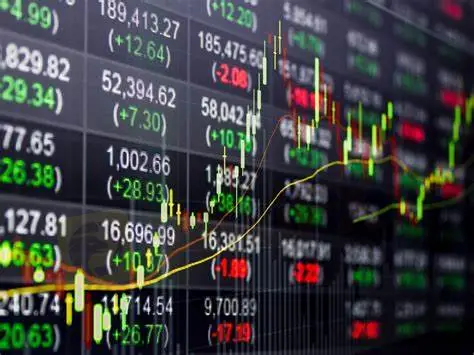简体中文
繁體中文
English
Pусский
日本語
ภาษาไทย
Tiếng Việt
Bahasa Indonesia
Español
हिन्दी
Filippiiniläinen
Français
Deutsch
Português
Türkçe
한국어
العربية
Understanding Market Capital in Stock Trading: A beginner’s guide for South African Traders.
Abstract:Market capitalization refers to the total dollar value of all outstanding shares of a company at the current market price. It is simply the aggregate invested capital of a company represented in a dollar amount.
By: Chime Amara

What is Market capitalization?
Market capitalization refers to the total dollar value of all outstanding shares of a company at the current market price. It is simply the aggregate invested capital of a company represented in a dollar amount. Since it represents the “market” value of a company, it is computed based on the current market price (CMP) of its shares and the total number of outstanding shares. Similarly, Market capitalization, also known as “market cap”, is also used to compare and categorize the size of companies among investors and analysts.
How to calculate Market Capital
Market cap is calculated by multiplying a company's outstanding shares by the current market price of one share. Since a company has a given number of outstanding shares, multiplying X with the per-share price represents the total dollar value of the company.
Formula and Calculation
The formula for market cap is:
{Market Cap} = {Price Per Share} X { Outstanding Shares }
Market Cap = Price Per Share X Outstanding Shares
Types of Market Capitalization
There are broadly six main classification of Market capital such as: Mega Cap, Large Cap, Mid Cap, Small Caps, Micro Cap and Nano Cap. A little explanation for each can be seen below:
Mega Cap
This refers to companies with a market cap of $200 billion and above. They are the largest publicly traded companies by market value, and typically represent the leaders of a particular industry sector or market. Only a few companies qualify under this category due to the large amount of capital involved.
For instance Apple (AAPL) has a market cap of over $2.3 trillion, while online retailer Amazon.com (AMZN) stands next with over $1.67 trillion market cap.
Large Cap
These refer to those companies with a total market cap between $10 billion to $200 billion. For example, International Business Machines Corp. (IBM) and General Electric (GE) are large-cap stocks with market caps of $125 billion and $117 billion, respectively.
Both mega and large-cap stocks caps are referred to as blue chips and are considered to be relatively stable and secure. However, there is no guarantee of these companies maintaining their stable valuations as all businesses are subject to market risks.
Mid Cap
Mid-cap is the term given to companies with a market capitalization—or market value—between $2 and $10 billion.
Small Caps
A small-cap stocks refers to those that has a total share value of $300 million to $2 billion, although the precise figures used vary among brokerages. Small cap here is used to refer to those young companies that may have promising growth potential, a few established old businesses which may have lost value in recent times for a variety of reasons also figure in this list.
Micro Cap
Companies that are considered micro-cap consist mostly of penny stocks—this category denotes companies with market capitalizations between $50 million to $300 million. Often Micro cap refers to those companies that are still at their developmental stage. While the upward potential of such companies is high if they succeed, the downside potential is equally worse if they completely fail. Investments in such companies may not be for the faint-hearted and require more due diligence.
Nano Cap
Nano cap refers to small, publicly traded companies with a market capitalization below $50 million. Often, the Nano market caps have a high-risk, high-reward layer beyond the micro-caps. These companies are considered to be the riskiest, and the potential for gain varies widely.

Disclaimer:
The views in this article only represent the author's personal views, and do not constitute investment advice on this platform. This platform does not guarantee the accuracy, completeness and timeliness of the information in the article, and will not be liable for any loss caused by the use of or reliance on the information in the article.
Read more

WikiEXPO Dubai 2024 will take place soon!
2 Days Left!

WikiEXPO Dubai 2024 is coming soon
3 Days Left!

Trader Exposes Unethical Practices by STP Trading
A recent allegation against STP Trading has cast doubt on the firm's business practices, highlighting the potential risks faced by retail traders in an increasingly crowded and competitive market.

What Makes Cross-Border Payments Easier Than Ever?
Cross-border payments are now faster, cheaper, and simpler! Explore fintech, blockchain, and smart solutions to overcome costs, delays, and global payment hurdles.
WikiFX Broker
Latest News
Hackers Charged for $11M Crypto Theft Using SIM-Swaps
Role of Central Banks in the FX Market
FCA Alerts Against Sydney FX
What Makes Cross-Border Payments Easier Than Ever?
Trader Exposes Unethical Practices by STP Trading
Bitcoin Nears $100,000: A Triumph of Optimism or a Warning Sign?
Malaysian Man Loses RM113,000 in Foreign Currency Investment Scam
Mastercard Partners with JPMorgan for B2B Cross-Border Payments
FCA Identifies Clone Firm Exploiting Admiral Markets' Credibility
Coinbase Under Scrutiny Amid Wrapped Bitcoin Delisting Controversy
Currency Calculator


